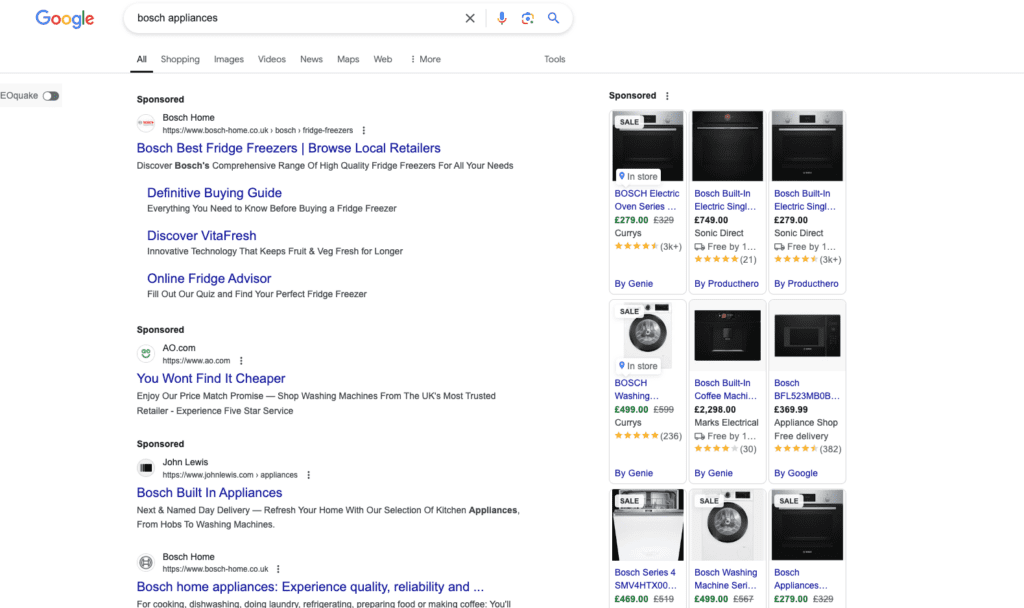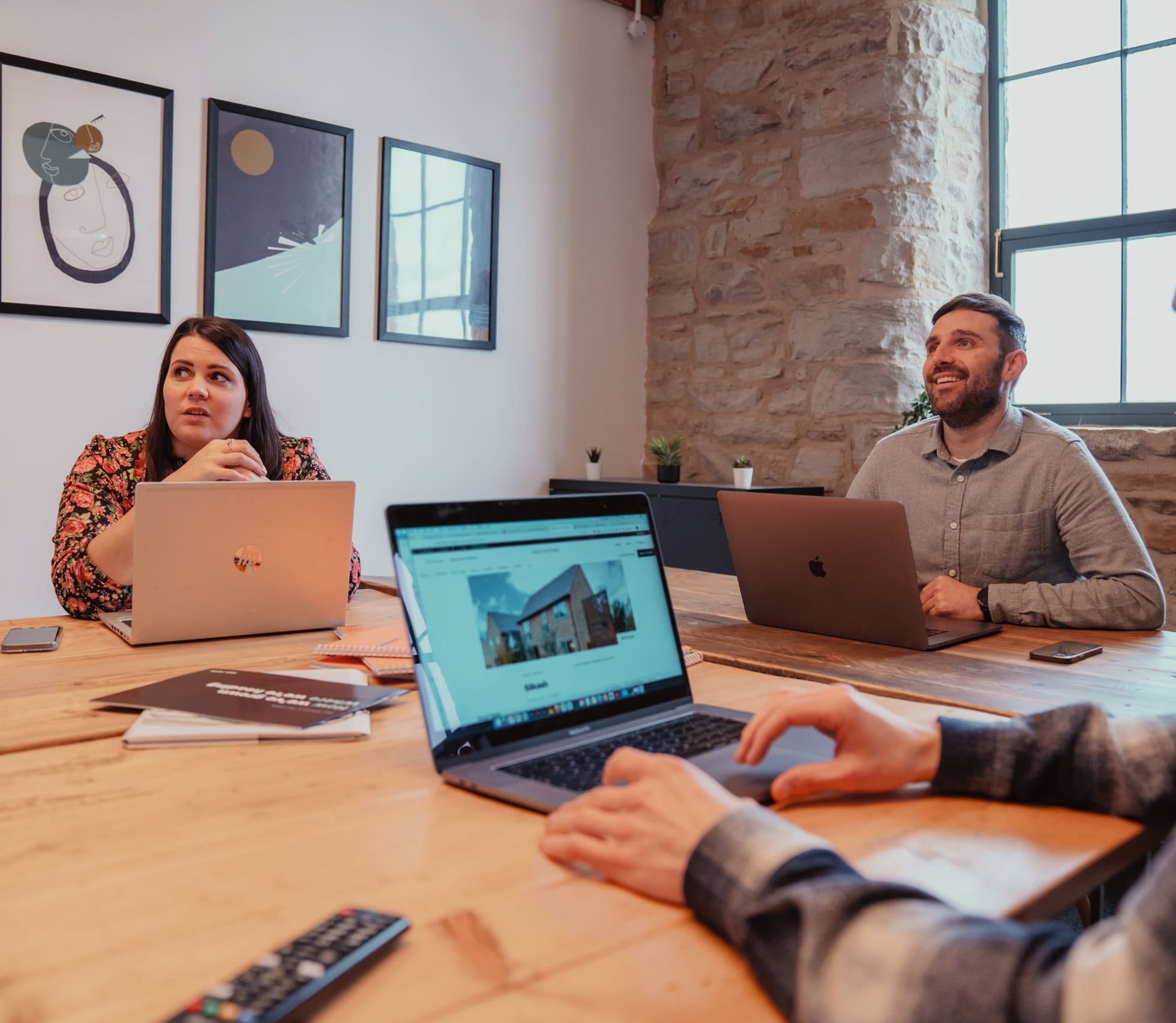Find out everything you need to know about how digital marketing trends are transforming the manufacturing landscape in 2025.
Drawing from our experience working with global manufacturers to deliver growth marketing strategies, this article provides valuable insights into emerging trends and actionable steps to help your business stay ahead and capitalise on new opportunities.
1. The rise of data-driven marketing in manufacturing
Data-driven marketing has always been important, but thanks to AI and analytics, it’s now a real game-changer. Manufacturing companies can tap into data to target customers more precisely and stay a step ahead of their needs.
Predictive analytics, for instance, empowers companies to stay ahead of market trends and customer behaviours, making it possible to deliver the right message at the right time. By leveraging AI-driven tools, leaders can make more informed decisions, optimise marketing spend, and align their strategies with customer expectations.
Key Focus for 2025:
To remain competitive, integrate advanced AI tools into your marketing ecosystem. AI-driven CRM platforms can not only analyse customer behaviour but also predict future requirements, allowing for more personalised and efficient customer engagements. Investing in such technologies will position your company to better meet evolving customer demands, maximise marketing ROI and give you greater insight into your products position in the market.

2. Content marketing focused on niche audiences
Find out why content marketing targeted at niche B2B audiences is becoming a game-changer for manufacturing companies. With 92% of B2B buyers preferring to engage with content that feels directly relevant to their needs, creating tailored content can set your business apart in a crowded market.
Manufacturers that focus on sector-specific content – such as white papers, technical blogs, and case studies position themselves as industry experts by building credibility and trust.
Instead of aiming for the largest possible audience, it’s about reaching the right audience with insights that resonate at the right time.
This approach not only builds stronger relationships but also drives more qualified leads that align with your business goals. By providing your sales team with marketing-qualified leads (MQLs), the people they engage with are more likely to be ready to buy, increasing the contact-to-customer conversion rate and leading to more closed deals overall.
Actionable takeaway: Develop a content strategy centred on the industries you serve best. Leverage your expertise to create in-depth white papers, blog posts, case studies, videos, and webinars that address specific challenges within these sectors. Consider using immersive formats like AR for more engaging, experience-driven content.
By creating top-notch, valuable niche content, you’ll stand out and connect with decision-makers who are after real solutions.
3. Video marketing and virtual product demos
Manufacturers are turning to video marketing and virtual demos to boost engagement and sales. With 87% of marketers seeing a positive ROI from video, it’s no wonder it’s become a go-to tool, especially for products that need more than words to explain
For instance, Siemens has effectively utilised video marketing to provide virtual tours of their production facilities, showcasing their advanced technologies and capabilities.
Similarly, Caterpillar has leveraged video content to offer detailed product demonstrations, showing how their heavy machinery performs in real-life conditions. These videos not only illustrate the features but also build confidence among potential buyers by demonstrating the products’ capabilities and reliability.
Virtual product demos have also proven highly successful, especially as global business operations increasingly adopt remote approaches.
For example, Atlas Copco has used virtual product demonstrations to engage with prospects worldwide, allowing buyers to experience their compressors and tools without needing to visit in person. This immersive approach has helped them maintain strong client relationships and shorten the sales cycle.
Actionable takeaway: Begin creating high-quality video content to demonstrate your products in action. Showcase their features and benefits, as well as real-world applications. Use platforms like YouTube and LinkedIn to reach a broader audience, and consider hosting virtual webinars or live demos to provide prospective clients with an engaging, in-depth experience of your product offerings.
4. Automation and AI in email marketing
Email marketing is still a must-have, and with automation, it’s easier than ever for manufacturers to nurture leads by sending the right content at just the right time.
An example of this could be to send automated email workflows that target personalised content based on user behaviour, significantly increasing engagement rates.
By using AI to analyse customer preferences, companies are ensuring that each recipient receives content tailored to their specific needs, including targeted offers and follow-up sequences. This results in a more efficient lead nurturing process that moves prospects seamlessly along their buying journey until they are ready to speak to sales or make a purchase.
Actionable takeaway: Implement automated email workflows that provide value to your customers at every stage of their buying journey. Set up email sequences that respond to specific actions, such as visiting a product page or downloading a brochure, to keep potential leads engaged.
5. GEO and the shift towards hyper-personalised experiences
Discover how Generative Experience Optimisation (GEO) is transforming digital marketing by enabling hyper-personalised customer experiences.
In B2B manufacturing, tailored interactions are a must. GEO uses AI to deliver personalised content and experiences that really speak to your customers’ needs.
For example, Honeywell has integrated IoT technology into its industrial product offerings, enabling real-time data collection and analysis. This approach allows customers to receive personalised insights and recommendations based on their specific operational needs, improving efficiency and driving higher customer satisfaction. As a result, Honeywell has seen enhanced engagement and increased sales from these tailored solutions.
Actionable takeaway: Explore how GEO can be applied to your customer journey. Identify key touchpoints where personalised experiences can make a difference, and use AI-driven GEO tools to deliver content that speaks directly to each customer’s unique needs. This could involve optimising landing pages, email campaigns, or product suggestions to boost conversions and drive customer satisfaction.
6. Paid advertising and programmatic ad buying
Programmatic ad buying takes care of the heavy lifting, getting your ads in front of the right people at the right time and making your campaigns more efficient
For example, GE has successfully used LinkedIn’s programmatic advertising options to target procurement managers in specific industries, resulting in more precise ad placements and a better return on investment.

Google Ads has also been used by Bosch to run data-driven campaigns that target niche segments, optimising ad spend and increasing lead quality.

Actionable takeaway: Allocate budget towards programmatic ad buying to streamline and enhance your ad targeting efforts. Use LinkedIn’s advanced targeting options to reach key decision-makers directly, and track campaign performance to continuously optimise.
7. Social media for B2B manufacturing marketing
While traditionally seen as a B2C tool, platforms like LinkedIn have become essential for B2B manufacturers looking to engage with their audience.
Rockwell Automation has used LinkedIn to share insights on industry innovations and thought leadership, fostering meaningful discussions with prospects.
Actionable takeaway: Create a social media calendar that highlights your expertise and industry trends. Get involved by asking questions, sharing insights, and jumping into conversations to build trust and credibility.
8. Sustainability as a marketing message
With growing emphasis on environmental responsibility, manufacturers who go green and share their efforts gain a real edge in the market.
For example, Schneider Electric has prominently highlighted its sustainability initiatives, such as using renewable energy in production processes, and this focus has resonated with clients prioritising green practices in their supply chains.
Similarly, Unilever’s commitment to sustainability, backed by ISO certifications and other recognised benchmarks, has helped solidify its position as a preferred supplier for environmentally conscious buyers.
Actionable takeaway: Showcase your sustainability efforts across your marketing channels. Create a dedicated page on your website that details your eco-friendly initiatives, and consider developing case studies or infographics that illustrate the impact of your sustainable practices.

So, there’s a lot to get started with, manufacturers who proactively adopt these strategies will be well-positioned to thrive in the evolving landscape. By focusing on personalisation, engagement, and credibility, you can turn these insights into powerful growth opportunities for your business.


